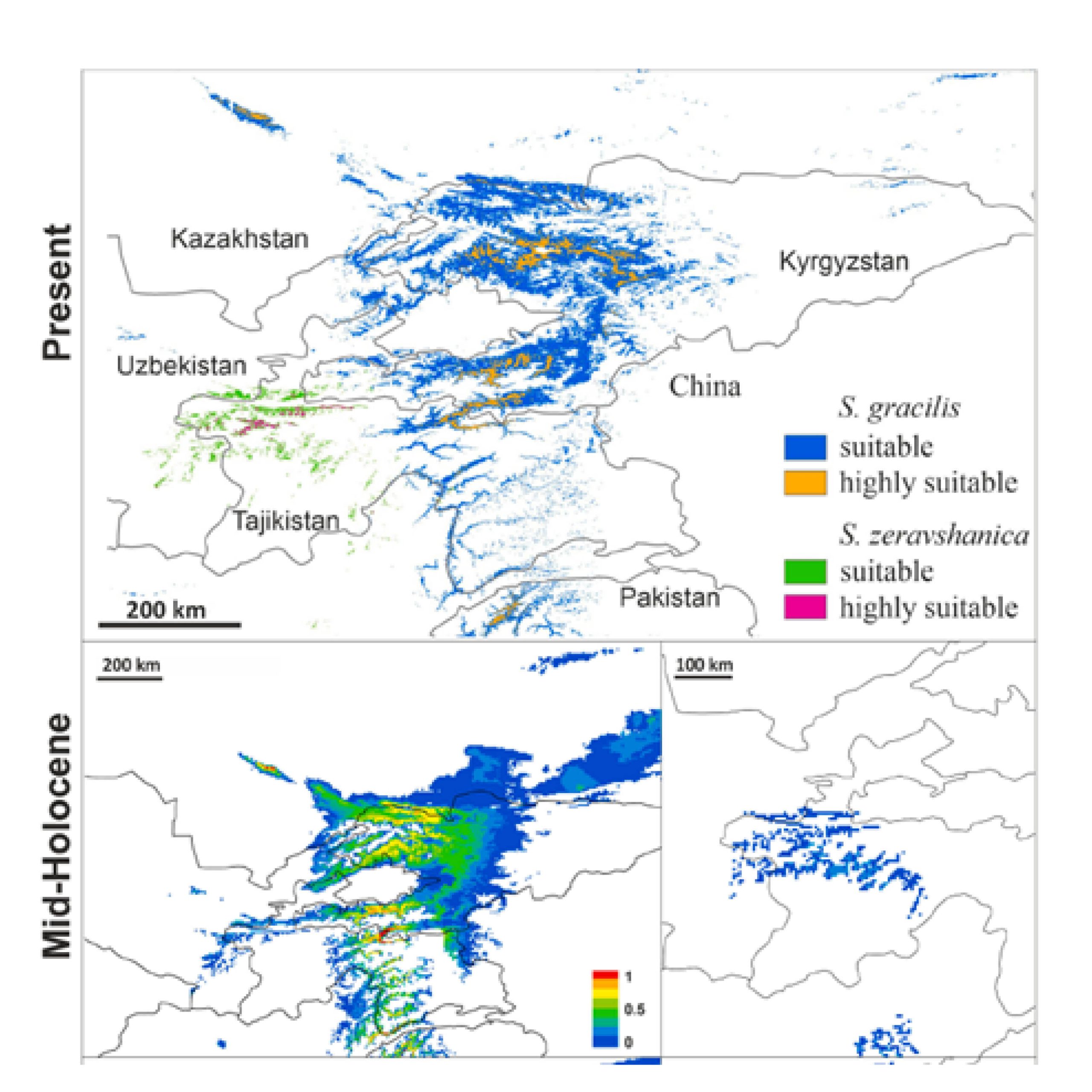Zrozumienie rozmieszczenia gatunków, zróżnicowania genetycznego i historii ewolucji jest niezwykle ważne dla regionów górskich o dużej różnorodności gatunków endemicznych, które są szczególnie wrażliwe na zmiany klimatu. Na podstawie analizy zmiennych środowiskowych i danych molekularnych oceniliśmy zmienność genetyczną, procesy demograficzne i reakcję przystosowanych do zimna, endemicznych odmian geograficznych Stipa gracilis (rozmieszczonych w górach Tian Shan) i S. zeravshanica (rozmieszczonych w zachodnich górach Pamiro-Alaiu) na czwartorzędowe oscylacje klimatyczne. Chociaż występowanie obu gatunków jest ściśle związane ze skałami wapiennymi, różnice w zasięgach występowania gatunków zależą głównie od czynników klimatycznych, zwłaszcza temperatury i opadów. Szersza nisza ekologiczna S. gracilis pozwala jej lepiej przystosować się do globalnego ocieplenia i potencjalnie rozszerzyć swój zasięg w przyszłości, podczas gdy S. zeravshanica, ze swoją węższą niszą, jest bardziej podatna na zmiany środowiskowe i potencjalnie zagrożona wyginięciem.

Abstract
Understanding species distribution, genetic diversification and evolutionary history is extremely important for mountainous regions with a high diversity of endemic species, which are particularly sensitive to climate change. In this study, we use environmental and molecular data obtained from genome-wide analyses to infer the genetic variability, demographic processes, and response of the cold-adapted, endemic geographical-vicariants Stipa gracilis (distributed in the Tian Shan Mts) and S. zeravshanica (distributed in the western Pamir-Alai Mts) to Quaternary climatic oscillations in a Central Asian mountain biodiversity hotspot. Genomic-based reconstructions of demographic history indicate that the examined endemics presented larger effective population sizes during the Last Glacial Maximum (LGM) period and experienced parallel demographic declines afterward. The results of fastSTRUCTURE analysis revealed three genetic clusters within S. gracilis populations and two within S. zeravshanica. The past distribution models reveals the glacial connectivity of both species, resulting in the detection of an admixture of S. zeravshanica genes in the specimens from the westernmost ‘Alaian’ population of S. gracilis. Although the occurrence of both species is closely associated with calcareous rocks, the differences in the ranges of the species distributions depend mostly on climatic factors, especially temperature and precipitation.
The wider realized ecological niche of S. gracilis allows it to better adapt to global warming and potentially extend its range in the future, while S. zeravshanica, with its narrower niche, is more susceptible to environmental changes and potentially at risk of extinction. The findings will contribute to a better understanding of the factors shaping the distribution and genetic differentiation of mountain endemic species and provide a theoretical basis for their conservation by identifying areas sensitive to climate change in biodiversity hotspots.
Vintsek L., Klichowska E., Nowak A., Nobis M. 2022. Genetic differentiation, demographic history and distribution models of high alpine endemic vicariants outline the response of species to predicted climate changes in a Central Asian biodiversity hotspot. Ecological Indicators 144: 109419 doi.org/10.1016/j.ecolind.2022.109419
